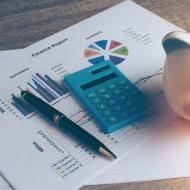
Why does society have social inequality
Social inequality seems to be a relic of the past and should go into oblivion, but the modern reality is such that in one form or another, stratification in society is present today, and this gives rise to a sense of injustice among those people who have been affected by social inequality.
Social inequality - what is it?
Social class inequality has existed since ancient times of human evolution. The history of different countries is a clear proof of what the oppression and enslavement of people leads to - these are rebellions, food riots, wars and revolutions. But this experience, written in blood, teaches nothing. Yes, now it has taken on softer, more veiled forms. What is the expression of social inequality and what does it represent today?
Social inequality is the division or differentiation of people into classes, societies or groups, according to their position in society, which involves unequal use of opportunities, life's benefits and rights. If we imagine social inequality schematically in the form of a ladder, then on its lowest steps there will be the oppressed, the poor, and at the top the oppressors and those who have power and money in their hands. This is the main sign of the stratification of society into the poor and the rich. There are other indicators of social inequality.
Causes of social inequality
What are the causes of social inequality? Economists see the root cause in unequal treatment of property and the distribution of wealth in general. R. Michels (a German sociologist) saw the reason in giving great privileges and powers to the apparatus of power, which was chosen by the people themselves. The reasons for the emergence of social inequality, according to the French sociologist E. Durkheim:
- Encouragement of people who bring the greatest benefit to society, the best in their field.
- The unique personal qualities and talents of a person that distinguish him from the general society.

Types of social inequality
Forms of social inequality are different, so there are several classifications. Types of social inequality according to physiological characteristics:
- age - applies to all people in certain age intervals, this can be seen when applying for a job, young people are not hired due to lack of experience, older people with their vast experience are replaced by young people who are more promising from the point of view of their superiors;
- social sexual inequality - here you can consider such a phenomenon as, expressed in the fact that few women occupy responsible positions, participate in the economic life of the country, a woman is assigned the role of "behind her husband";
- social ethnic inequality - small ethnic groups, those that are not included in the concept of "white race" are largely oppressed because of such phenomena as xenophobia and racism.
Social inequality due to status in society:
- lack/presence of wealth;
- proximity to power.
Manifestation of social inequality
The main signs of social inequality are observed in such a phenomenon as the division of labor. Human activities are diverse and each person is endowed with some talents and skills, abilities to grow. In this case, social inequality manifests itself as the giving of privileges to those who are more talented and promising for society. The stratification of society or stratification (from the word "strata" - a geological layer) is the building of a hierarchical ladder, division into classes, and if earlier it was slaves and slave owners, feudal lords and servants, then at the present stage it is a division into:
- top class;
- middle class;
- low-income (socially vulnerable);
- below the poverty line.

Consequences of social inequality
Social inequality and poverty, generated by the fact that only the elite can use the main resources of the planet, gives rise to conflicts and wars among the population. The consequences develop gradually and are expressed in the slow development of many countries, which leads to the fact that progress in the economy is also slowing down, democracy as a system is losing its positions, tension, discontent, psychological pressure and social disharmony are growing in society. According to the UN, half of the world's resources are owned by 1% of the so-called top elite (world domination).
Pros of social inequality
Social inequality in society as a phenomenon does not carry only negative properties, if we consider social inequality from the positive side, then we can note important things, looking at which the thought arises that everything “has a place to be under the Sun”. The advantages of social inequality for a person:
- an incentive to become the best in your field, to show your abilities and talents to the maximum;
- motivation for those who want ;
- ordering in the economic sphere, those who have capital produce resources, in contrast to those who do not have capital and are only able to feed themselves and their families.
Examples of social inequality in history
Examples of social inequality or stratification systems:
- Slavery- an extreme degree of enslavement, the original form of social inequality known since antiquity.
- castes. A type of social stratification that has developed since antiquity, when social inequality was determined by caste, a child, being born from birth, belonged to a certain caste. In India, it was believed that the birth of a person in one or another caste depends on his deeds in a past life. There are 4 castes in total: the highest - Brahmins, Kshatriyas - warriors, Vaishyas - merchants, merchants, Shudras - peasants (the lowest caste).
- Estates. The upper classes - the nobility and the clergy had the legal right to transfer property by inheritance. Unprivileged class - artisans, peasants.

Modern forms of social inequality
Social inequality in modern society is an inherent property, so the social theory of functionalism considers stratification in a positive way. The American sociologist B. Barber divided modern types of social stratification based on 6 criteria:
- prestige of the profession.
- The presence of power.
- Wealth and income.
- Religious affiliation.
- Education, knowledge.
- Belonging to one or another ethnic group, nation.
Social inequality in the world
The problem of social inequality is that racism, xenophobia, and discrimination are generated. The most revealing criterion of social inequality throughout the world is the different income of the population. The factors influencing the stratification in society around the world remain the same as many years ago:
- way of life- urban or rural, a well-known fact that in the villages wages are lower than in the city, and conditions are often worse, and there is more work;
- social roles(mother, father, teacher, official) - determine the status, prestige, the presence of power, property;
- division of labor- physical and intellectual work are paid differently.
Social inequality appeared in primitive tribes and intensified at subsequent stages of the development of society.
In modern society, large social groups are distinguished, differing in income (wealth), level of education, profession and nature of work. They are called classes, social strata.
In society, there is a social division into groups of the rich (upper class), prosperous (middle class), poor (lower class).
The rich, the upper class include those who own large property, money. They are on the top rung of the social "ladder", receive large incomes, have large property (oil companies, commercial banks, etc.). A person can become rich thanks to talent and hard work, inheritance, and a successful career.
Between the rich and the poor is the middle class of wealthy people, provided with money. They maintain a decent standard of living that allows them to satisfy all reasonable needs (purchase high-quality food, expensive clothes, housing).
The poor - the lower class - receive the minimum income in the form of wages, pensions, stipends, social benefits. This money can be used to purchase only the smallest amount of necessities of life necessary to maintain the health and life of a person (food, clothing, etc.).
Imagine that all people are socially equal. Universal equality deprives people of incentives to move forward, the desire to apply their maximum efforts and abilities to fulfill their duties (people will consider that they receive no more for their work than they would receive if they did nothing all day).
Inequality between people exists in any society. This is quite natural and logical, given that people differ in their abilities, interests, life preferences, value orientations, etc.
In every society, there are poor and rich, educated and uneducated, enterprising and unenterprising, those in power and those without it.
In this regard, the problem of the origin of social inequality, attitudes towards it and ways to eliminate it has always aroused increased interest, not only among thinkers and politicians, but also among ordinary people who consider social inequality as an injustice.
In the history of social thought, the inequality of people was explained in different ways: by the primordial inequality of souls, by divine providence, by the imperfection of human nature, by functional necessity by analogy with the organism.
The German economist K. Marx associated social inequality with the emergence of private property and the struggle of interests of various classes and social groups.
The German sociologist R. Dahrendorf also believed that the economic and status inequality underlying the ongoing conflict of groups and classes and the struggle for the redistribution of power and status is formed as a result of the market mechanism for regulating supply and demand.
Russian-American sociologist P. Sorokin explained the inevitability of social inequality by the following factors: internal biopsychic differences of people; the environment (natural and social), which objectively puts individuals in an unequal position; the joint collective life of individuals, which requires the organization of relations and behavior, which leads to the stratification of society into the ruled and the managers.
The American sociologist T. Pearson explained the existence of social inequality in every society by the presence of a hierarchized system of values. For example, in American society, success in business and career is considered the main social value, therefore, scientists of technological specialties, plant directors, etc., have a higher status and income, while in Europe the dominant value is “preservation of cultural patterns”, in connection with what society gives special prestige to humanities intellectuals, clergymen, university professors.
Social inequality, being inevitable and necessary, manifests itself in all societies at all stages of historical development; only the forms and degree of social inequality change historically. Otherwise, individuals would lose the incentive to engage in complex and laborious, dangerous or uninteresting activities, to improve their skills. With the help of inequality in income and prestige, society encourages individuals to engage in necessary, but difficult and unpleasant professions, encourages more educated and talented people, and so on.
The problem of social inequality is one of the most acute and topical in modern Russia. A feature of the social structure of Russian society is a strong social polarization - the division of the population into poor and rich in the absence of a significant middle stratum, which is the basis of an economically stable and developed state. Strong social stratification, characteristic of modern Russian society, reproduces a system of inequality and injustice, in which the opportunities for independent self-realization in life and raising social status are limited for a fairly large part of the Russian population.
Against the backdrop of the ongoing crisis, Russians are rapidly losing their accumulated assets, and social stratification in the country is increasing. According to official forecasts, the well-being of the population will be restored only in 2018 - at the same time when the authorities will seriously start thinking about raising the retirement age and taxes. Lenta.ru looked into the causes of growing poverty in Russia.
20 million over the line
Over the year - from mid-2015 to mid-2016 - the well-being of Russians fell by 14.4 percent at once. Within 12 months, household assets dropped from $12,086 to $10,344. This is the study of the Global Wealth Report of the Swiss financial corporation Credit Suisse.
The bank recalls that the Russians rapidly grew rich in the early 2000s. Thanks to high oil prices in 2000-2007, the well-being of citizens increased eightfold. In 2007, growth slowed down and became uneven, then it stopped completely and turned into a fall.
Analysts of the financial organization also recorded an increase in the social gap between the wealthy and the poor. In Russia, 89 percent of the total wealth is controlled by 10 percent of households. This is one of the highest rates in the world. For comparison: in the US it is 78 percent, in China - 73 percent.
However, the Credit Suisse report may not take into account some features of the Russian economy. Foreign researchers do not always take into account the role of real estate in the country. Often the poor live in expensive apartments located in prestigious areas of large cities. Selling real estate and improving the lives of many Russians is hindered by a sacred attitude to square meters (it was formed over decades of Soviet power) - an apartment for such people is not potential capital, but the purpose of existence. We should not forget about the low social mobility of the population, which also makes it difficult to get rid of overly expensive real estate.
“The main asset of the population in our country is housing. Now the crisis, and the housing market is very sluggish. There are fewer transactions. In this regard, the prices that are in the statistics, let's say, are not entirely accurate. Statistically, the inequality is caused by the huge difference in housing prices between Moscow and other cities. People living in a one-room apartment in the capital are five times richer than those who occupy a similar area in the provinces,” commented Alexandra Burdyak, senior researcher at the Institute for Social Analysis and Forecasting of the RANEPA under the President of Russia.
In addition, one of the reasons for the decline in the quality of life in Russia, Credit Suisse calls the devaluation of the ruble. In 2007, the American currency was worth 25 rubles, nine years later - already 64 rubles. “The sharp drop in the level of well-being was affected by the change in the exchange rate of the ruble, because at Credit Suisse everyone counts in dollars. In other countries, the exchange rate does not change as much as the exchange rate of the ruble in the last year or two,” Alexandra Burdyak continued.
According to the study, the total amount of assets owned by Russians is a trillion dollars. It is not clear how the prices for residential real estate, which is the main property of the vast majority of Russians, were calculated. Calculations based on official statistics show a completely different picture. In 2015, according to the Ministry of Construction, the country's housing stock was more than 3.4 billion square meters, and the average market price of one meter was 36,000 rubles. Multiplying these figures and dividing by the average dollar exchange rate, we get the total value of residential real estate at the disposal of Russians at the level of about 1.8 trillion dollars. To this we add deposits in banks ($360 billion). Finally, there are investments in securities, mutual funds, foreign real estate and other property abroad. All this adds up to hundreds of billions of dollars more. The Boston Consulting Group, for example, estimates the volume of Russian assets at $1.4 trillion.
But no matter how Credit Suisse came to its conclusions, one thing is clear: the public is losing money and the gap between rich and poor is growing.
In this case, the situation will worsen. According to the Accounts Chamber, by 2019, 20.5 million people will be below the poverty line in Russia. That is 1.4 million more people than in 2015.
Affairs of the Heart
The fact that the devaluation of the ruble has become one of the reasons for the sharp decline in the standard of living, on November 22, and presidential adviser Sergei Glazyev. The academician, who actively criticizes the financial and economic bloc of the government, this time again went over the work of the monetary authorities.
“No other country in the world has ever seen such records, so that the volatility of the national currency was so high. It is twice the nearest to us Turkey in this indicator. Devaluation - we also set records, including among oil-producing countries,” Glazyev said.
In general, he compared the state of the Russian economy with. The press secretary of the head of state, Dmitry Peskov, once again stated that this is the personal position of Sergei Glazyev.

Alcohol and taxes
“I completely agree with the Credit Suisse data and even think that they are somewhat embellishing. We have not one tenth, but three percent of the people who own most of the Russian economy. And the reason is the colossal difference in income, ”said Nikolai Kolomeytsev, First Deputy Chairman of the State Duma Committee on Labor, Social Policy and Veterans Affairs, in an interview with Lenta.ru.
He recalled that earlier proposals were submitted to the State Duma to limit the income of owners and managers of state-owned enterprises. The bill did not pass. “In general, 12 Russian state-owned companies have huge, state-guaranteed loans, but do not have motivated management. Not a single Western company would tolerate top management living so curly," he said.
According to Kolomeitsev, there are several ways to defeat social stratification. First, it is necessary to switch to progressive taxation. Secondly, it is necessary to restore the state monopoly on the production of alcohol.
“Both in tsarist Russia and in Soviet Russia there was a monopoly on the production of alcohol. This ruled out the possibility of poisoning and brought large incomes. It is necessary to restore state control over the production and sale of alcoholic beverages. Alcohol, if it is taken under the control of the state, should give four trillion additional rubles to the budget. The progressive scale is another five trillion,” he calculated.
But a simple redistribution of budget funds can hardly solve the problem of poverty and stratification. It is solved thanks to stable economic growth. There are achievements in this regard. The economy is gradually moving away from shocks and adapting. GDP growth is expected in 2017. Ministry of Labor that by 2018 the level of income of Russians will return to the pre-crisis level. On the other hand, in 2018 the government will actively begin to discuss the issues of raising the retirement age and the tax burden - the implementation of these measures may negate the restoration of the population's well-being.
Meanwhile, as the National Bureau of Credit Histories (NBKI) reported, by the end of June this year, the number of Russians who could formally fall under the law on bankruptcy of individuals reached 597,400 people (they have overdue debt on loans of more than 500 thousand rubles for a period of over 90 days). In the last three months alone, this number has increased by 2.0%. In the already mentioned Jewish Autonomous Region, the increase in the number of potential bankrupts was 8.3%, in the Republic of Altai - 5.3%, in Ingushetia - 4.5%.
Can the state change the situation? Theoretically, yes, there would be a desire. But this obviously does not yet exist. There is no alternative. On the contrary, new waves of privatization are planned, the tax scale remains flat (and, in fact, regressive, given that wealthy owners mostly live on rent rather than wages), the ruble is still in free float. Population expresses his opinion: 25% believe that the state gives them a lot, but they have the right to demand more; 25% are sure that they have no obligations to the state, because it gives them too little; 19% consider it necessary to force the authorities to serve their interests.
There is still a margin of patience, however, as well as cause for alarm.
MORE RELATED
Even a superficial look at the people around us gives reason to talk about their dissimilarity. People are different by gender, age, temperament, height, hair color, intelligence level and many other features. Nature endowed one with musical abilities, the other with strength, the third with beauty, and prepared the fate of a weak invalid for someone. Differences between people, due to their physiological and mental characteristics, are called natural. Natural differences are far from harmless, they can become the basis for the emergence of unequal relationships between individuals. The strong force the weak, the cunning triumph over the simpletons. Inequality resulting from natural differences is the first form of inequality, in one form or another manifested in some species of animals. However, in humansocietythe main thing is social inequality, inextricably linked with social differences, social differentiation.
Social those are called differences, which generated by social factors:
way of life (urban and rural population),
Division of labor (workers of mental and physical labor),
Social roles (father, doctor, politician), etc.
All this leads to differences in the degree of ownership of property, income received, power, achievement of social status, prestige, education.
The different levels of social development are basis for social inequality, the emergence of rich and poor, the stratification of society, its stratification (a stratum layer that includes people with the same income, power, education, prestige).
Income- the amount of cash receipts received by a person per unit of time. It may be labor, or it may be the possession of property that “works”.
Education- a complex of knowledge obtained in educational institutions. Its level is measured by the number of years of study. Say, incomplete secondary school - 9 years. The professor has more than 20 years of education behind him.
Power- the ability to impose your will on other people, regardless of their desire. It is measured by the number of people to whom it applies.
Prestige- this is an assessment of the position of the individual in society, prevailing in public opinion.
Causes of social inequality
Can a society exist without social inequality? Apparently, in order to answer the question posed, it is necessary to understand the reasons that give rise to the unequal position of people in society. In sociology, there is no single universal explanation for this phenomenon. Various scientific and methodological schools and trends interpret it differently. We single out the most interesting and noteworthy approaches.
Functionalism explains inequality based on the differentiation of social functions performed by different layers, classes, communities. The functioning and development of society is possible only thanks to the division of labor, when each social group carries out the solution of the corresponding vital tasks for the entire integrity: some are engaged in the production of material goods, others create spiritual values, others manage, etc. For the normal functioning of society an optimal combination of all types of human activity is necessary. Some of them are more important, others are less. So, on the basis of the hierarchy of social functions, a corresponding hierarchy of classes, layers is formed performing them. Those who carry out the general leadership and administration of the country are invariably placed at the top of the social ladder, because only they can support and ensure the unity of society, create the necessary conditions for the successful performance of other functions.
The explanation of social inequality by the principle of functional utility is fraught with a serious danger of a subjectivist interpretation. Indeed, why is this or that function considered as more significant, if society as an integral organism cannot exist without functional diversity. This approach does not allow explaining such realities as the recognition of an individual as belonging to the highest stratum in the absence of his direct participation in management. That is why T. Parsons, considering the social hierarchy as a necessary factor that ensures the viability of the social system, links its configuration with the system of dominant values in society. In his understanding, the location of social strata on the hierarchical ladder is determined by the ideas that have formed in society about the significance of each of them.
Observations of the actions and behavior of specific individuals gave impetus to the development status explanation of social inequality. Each person, occupying a certain place in society, acquires his own status. Social inequality is an inequality of status, resulting both from the ability of individuals to perform a particular social role (for example, to be competent to manage, to have the appropriate knowledge and skills to be a doctor, lawyer, etc.), and from the opportunities that allow a person to achieve one or another position in society (ownership of property, capital, origin, belonging to influential political forces).
Consider economic view to the problem. In accordance with this point of view, the root cause of social inequality lies in the unequal attitude to property, the distribution of material wealth. most brightly this approach appeared in Marxism. According to his version, the emergence of private property led to the social stratification of society, the formation antagonistic classes. The exaggeration of the role of private property in the social stratification of society led Marx and his followers to the conclusion that it is possible to eliminate social inequality by establishing public ownership of the means of production.
The lack of a unified approach to explaining the origins of social inequality is due to the fact that it is always perceived at least at two levels. First, as a property of society. Written history knows no societies without social inequality. The struggle of people, parties, groups, classes is a struggle for the possession of greater social opportunities, advantages and privileges. If inequality is an inherent property of society, then it carries a positive functional load. Society reproduces inequality because it needs it as a source of life support and development.
Secondly, inequality always perceived as unequal relations between people, groups. Therefore, it becomes natural to seek to find the origins of this unequal position in the peculiarities of a person's position in society: in the possession of property, power, in the personal qualities of individuals. This approach is now widely used.
Inequality has many faces and manifests itself in various parts of a single social organism: in the family, in an institution, at an enterprise, in small and large social groups. It is necessary condition organization of social life. Parents, having an advantage in experience, skills, and financial resources in comparison with their young children, have the opportunity to influence the latter, facilitating their socialization. The functioning of any enterprise is carried out on the basis of the division of labor into managerial and subordinate-executive. The appearance of a leader in the team helps to unite it, turn it into a sustainable education, but at the same time it is accompanied by the provision leader of special rights.
Any social institution, organization strives to maintain inequality seeing in it ordering beginning, without which it is impossible reproduction of social ties and integration of the new. The same property belongs to society as a whole.
The problem of poverty and wealth.
Poverty It is a state in which the real needs of a person exceed his ability to satisfy them. Poverty is a relative concept and depends on the general standard of living in a given society. Poverty is the result of various and interrelated causes, which are grouped into the following groups:
Economic (unemployment, low wages, low labor productivity, non-competitiveness of the industry),
Socio-medical (disability, old age, high morbidity),
Demographic (single-parent families, a large number of dependents in the family),
Socio-economic (low level of social guarantees),
Educational qualification (low level of education, insufficient professional training),
Political (military conflicts, forced migration),
Regional-geographical (uneven development of regions).
If inequality characterizes society as a whole, then poverty concerns only part of the population. Depending on how high the level of economic development of the country, poverty covers a large or small part of the population. Under absolute poverty is understood as such a state in which an individual is not able to satisfy even the basic needs for food, housing, clothing, warmth, or is able to satisfy only the minimum needs that ensure biological survival on his income. The scale of poverty sociologists refer to the proportion of a country's population (usually expressed as a percentage) living near the official poverty line or threshold. The terms “poverty rate”, “poverty line” and “poverty ratio” are also used to indicate the scale of poverty. The poverty line is the amount of money officially set as the minimum income by which an individual or family is able to purchase food, clothing and housing. It is also called the "poverty level".
In Russia, he received an additional name - living wage. In sociology there are absolute And relative poverty. Relative poverty is understood as the inability to maintain a decent standard of living, or some standard of living accepted in a given society. Typically, relative poverty is less than half the average household income in a given country. Relative poverty is a comparative characteristic in two senses. First, it shows poverty in relation to the abundance or affluence enjoyed by other members of society who are not considered poor. The first meaning of relative poverty is the comparison of one stratum with other strata (layers). Second, it shows poverty relative to some standard. The lower limit refers. poverty is the subsistence minimum or poverty threshold, and the top is a decent standard of living.
At the end of the 20th century, Russian scientists began to distinguish between two types of poverty: 1) traditional poverty;
2) "new poor".
Examples of traditional poverty include single mothers, families with many children, the disabled and the elderly. The group of new poor included strata of the population who, by their education and qualifications, social status and demographic position, had never before belonged to the lower strata. The bulk of the "new poor" are state employees - employees and workers employed in the public sector (scientists, higher school teachers, officers). The decline is due to low wages at state-owned enterprises, total unemployment and part-time employment.
Thus, if the traditional poor include those who were considered poor in Soviet society, then the new poor include those who previously belonged to the prosperous middle strata, but became impoverished in post-Soviet society. The difference between the old and new poor in Russian society is fundamental. The old poor do not have what constitutes the social, cultural and economic foundation of the new poor - intellectual capital, the basis of which is higher and secondary specialized education. A good education in a civilized and stable society is a powerful social lift that helps people climb the social ladder and receive high and relatively high incomes. In a transitional society, when there is a fundamental change in the economy. and social structures, change of political regimes, education cannot be paid high enough. Since the vast majority of the educated population in Russia works in the public sector, and that is financed on a residual basis.
Another distinguishing feature of the new poor is that the subculture of poverty, the norms of life on the "social bottom", the psychology of despair are not inherited. They do everything to give their children the best education available to them, nurture their achievement motivation, and pass on the traditions and values of the Russian intelligentsia. This is a characteristic feature of only Russian society. In no country in the world are the poor, firstly, split into old and new, and secondly, the old new ones are unable, when the situation changes, to make rapid upward mobility and take their place on the average. The boundaries of the concept of poverty vary so much that determining who is poor and who is not is a very difficult operation - both from a theoretical and empirical point of view. In everyday reality, poverty means a lack of necessary resources, a state of extreme economic hardship, a state in which the available resources are so small that they do not allow meeting the basic needs for survival, taking part in the daily life of society. Poverty is "much more than money".
















